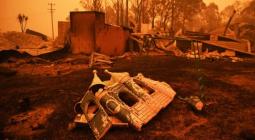“Even though there has been a lot more money going to Fema’s budget to respond to these things, the scale of these disasters has really been sucking that money up,” he said, noting the rising amount of repeated events like the back-to-back hurricane threat.
He has contributed to a product called the natural hazards index, which maps community vulnerability, and said it’s now much more common to see extreme events overlap or compound, hammering communities one after the other, and taxing emergency management, first responders, and affected communities.
Future planning, especially at the community level, will be essential to prepare for and adapt to the present threats that are only expected to worsen as the world warms.
“We know heat is coming and will get worse. Some parts of that we can’t stop but there are ways we can adapt our communities and livelihoods to better manage ourselves and our resources during future disasters,” he said.
In the meantime, Easterling has cautioned all to take imminent warnings seriously. In his community outside Asheville, North Carolina, the onslaught from Helene showered more than 17in (43cm) of rain in mere days. Neighbors, though, saw roughly double that. Friends barely escaped their home before it washed away in the floods, which broke records set in 1916.
“The bottom line is when you hear warnings, take them seriously,” he said. “We are not going to necessarily see more hurricanes in the future but when the sea surface temperatures are as warm as they are, especially in the Gulf, we are going to see more powerful ones.”




